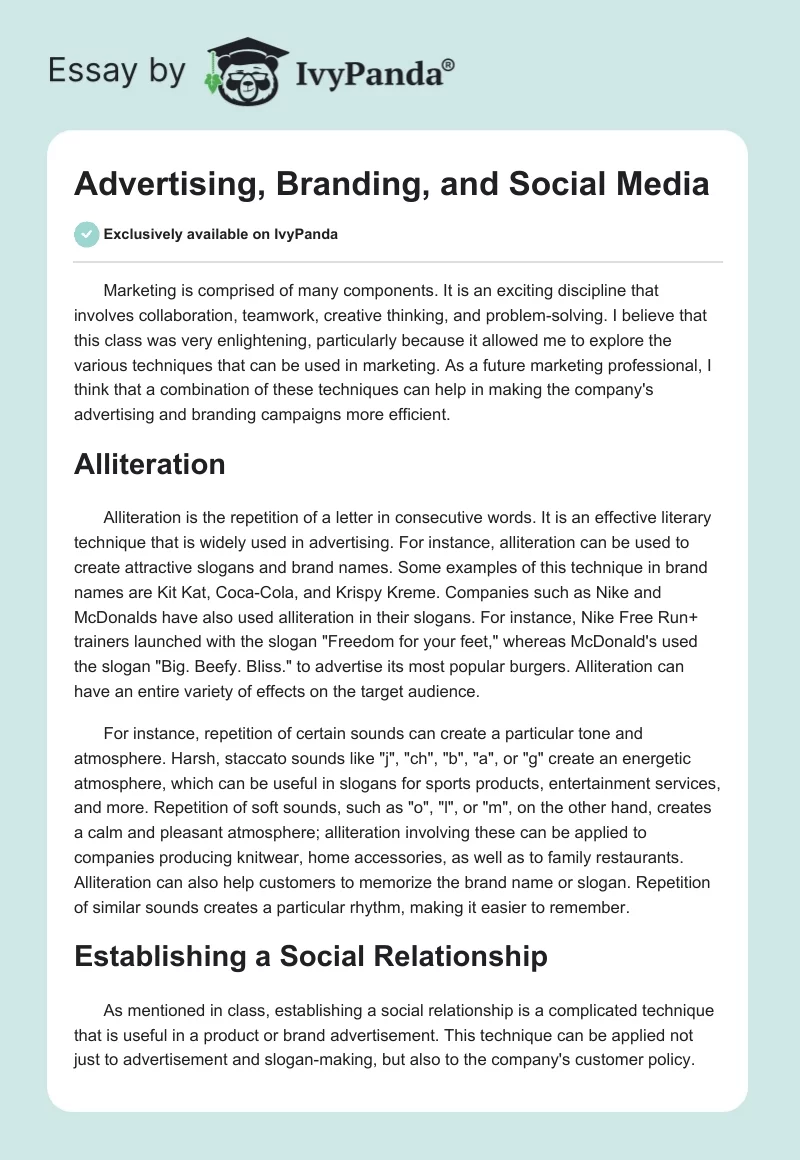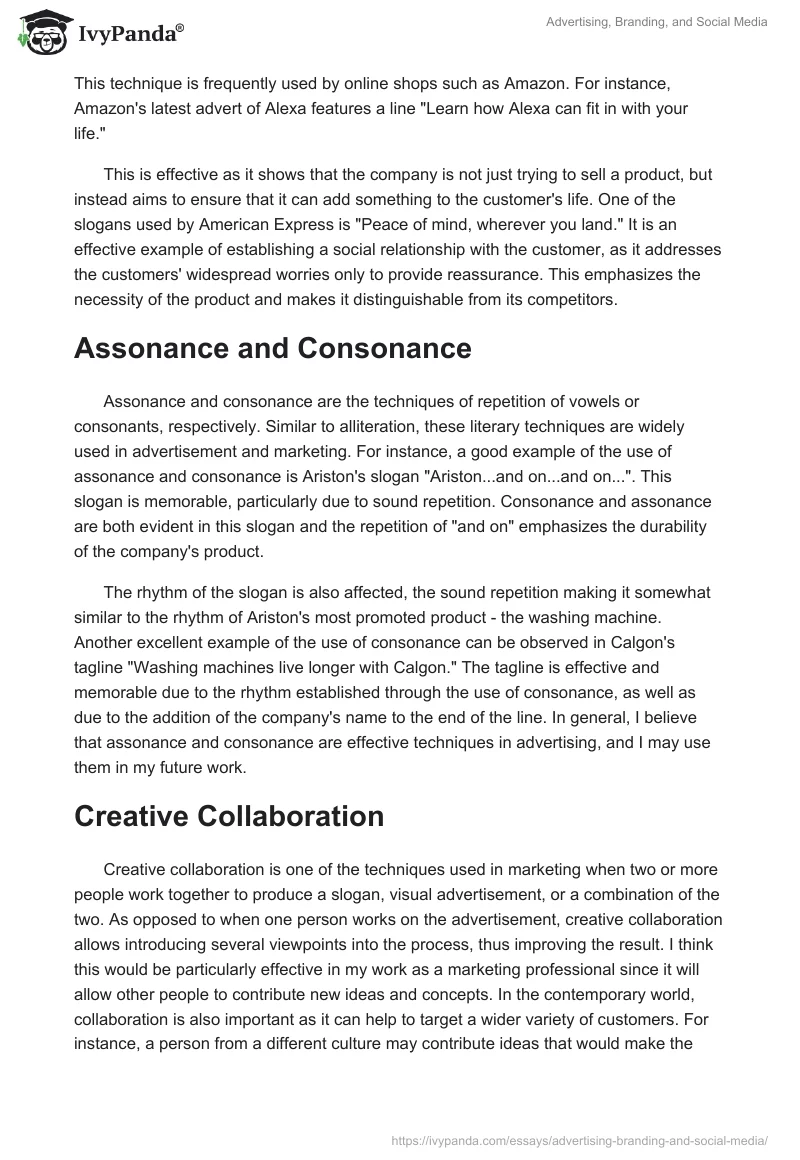Marketing is comprised of many components. It is an exciting discipline that involves collaboration, teamwork, creative thinking, and problem-solving. I believe that this class was very enlightening, particularly because it allowed me to explore the various techniques that can be used in marketing. As a future marketing professional, I think that a combination of these techniques can help in making the company’s advertising and branding campaigns more efficient.
Alliteration
Alliteration is the repetition of a letter in consecutive words. It is an effective literary technique that is widely used in advertising. For instance, alliteration can be used to create attractive slogans and brand names. Some examples of this technique in brand names are Kit Kat, Coca-Cola, and Krispy Kreme. Companies such as Nike and McDonalds have also used alliteration in their slogans. For instance, Nike Free Run+ trainers launched with the slogan “Freedom for your feet,” whereas McDonald’s used the slogan “Big. Beefy. Bliss.” to advertise its most popular burgers. Alliteration can have an entire variety of effects on the target audience.
For instance, repetition of certain sounds can create a particular tone and atmosphere. Harsh, staccato sounds like “j”, “ch”, “b”, “a”, or “g” create an energetic atmosphere, which can be useful in slogans for sports products, entertainment services, and more. Repetition of soft sounds, such as “o”, “l”, or “m”, on the other hand, creates a calm and pleasant atmosphere; alliteration involving these can be applied to companies producing knitwear, home accessories, as well as to family restaurants. Alliteration can also help customers to memorize the brand name or slogan. Repetition of similar sounds creates a particular rhythm, making it easier to remember.
Establishing a Social Relationship
As mentioned in class, establishing a social relationship is a complicated technique that is useful in a product or brand advertisement. This technique can be applied not just to advertisement and slogan-making, but also to the company’s customer policy. This technique is frequently used by online shops such as Amazon. For instance, Amazon’s latest advert of Alexa features a line “Learn how Alexa can fit in with your life.”
This is effective as it shows that the company is not just trying to sell a product, but instead aims to ensure that it can add something to the customer’s life. One of the slogans used by American Express is “Peace of mind, wherever you land.” It is an effective example of establishing a social relationship with the customer, as it addresses the customers’ widespread worries only to provide reassurance. This emphasizes the necessity of the product and makes it distinguishable from its competitors.
Assonance and Consonance
Assonance and consonance are the techniques of repetition of vowels or consonants, respectively. Similar to alliteration, these literary techniques are widely used in advertisement and marketing. For instance, a good example of the use of assonance and consonance is Ariston’s slogan “Ariston…and on…and on…”. This slogan is memorable, particularly due to sound repetition. Consonance and assonance are both evident in this slogan and the repetition of “and on” emphasizes the durability of the company’s product.
The rhythm of the slogan is also affected, the sound repetition making it somewhat similar to the rhythm of Ariston’s most promoted product – the washing machine. Another excellent example of the use of consonance can be observed in Calgon’s tagline “Washing machines live longer with Calgon.” The tagline is effective and memorable due to the rhythm established through the use of consonance, as well as due to the addition of the company’s name to the end of the line. In general, I believe that assonance and consonance are effective techniques in advertising, and I may use them in my future work.
Creative Collaboration
Creative collaboration is one of the techniques used in marketing when two or more people work together to produce a slogan, visual advertisement, or a combination of the two. As opposed to when one person works on the advertisement, creative collaboration allows introducing several viewpoints into the process, thus improving the result. I think this would be particularly effective in my work as a marketing professional since it will allow other people to contribute new ideas and concepts. In the contemporary world, collaboration is also important as it can help to target a wider variety of customers. For instance, a person from a different culture may contribute ideas that would make the advertisement appealing to the members of his or her culture, thus making the advertisement more efficient.
Conclusion
Overall, this class has taught me the foundations of the use of various techniques in branding and advertising. The application of these techniques and devices can help to promote the brand or a particular product. A combination of approaches can be used to make a slogan or a brand name memorable and to attract the customers’ attention, thus raising its popularity and improving the company’s profitability. The techniques we have discussed in this class can be applied both in my future work and in the use of social media platforms, which creates opportunities for effective communication in a variety of settings.


